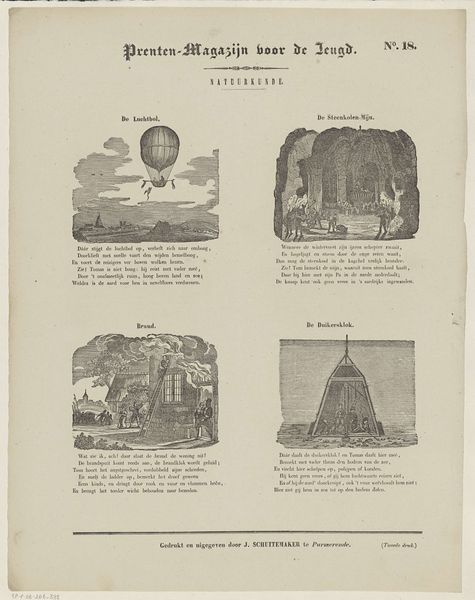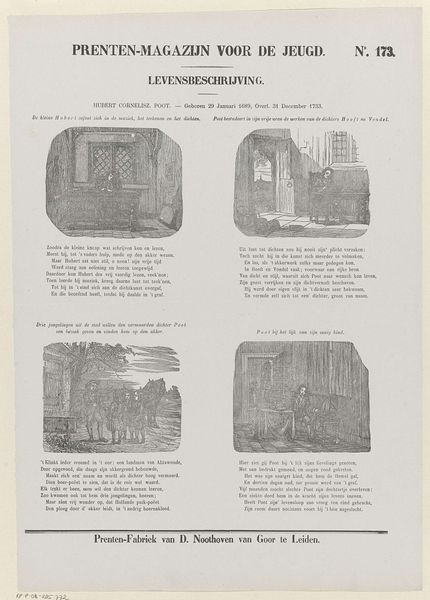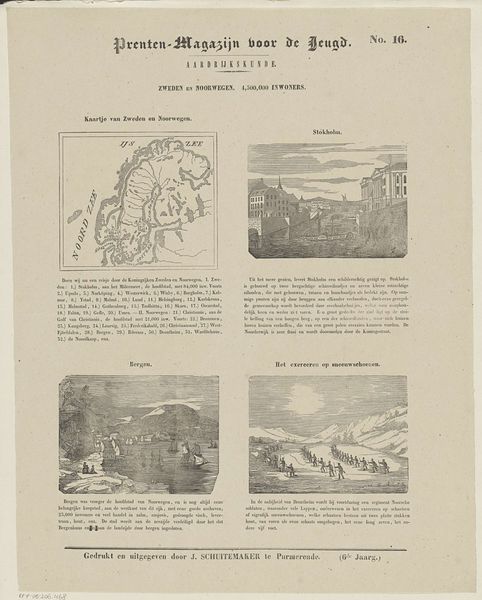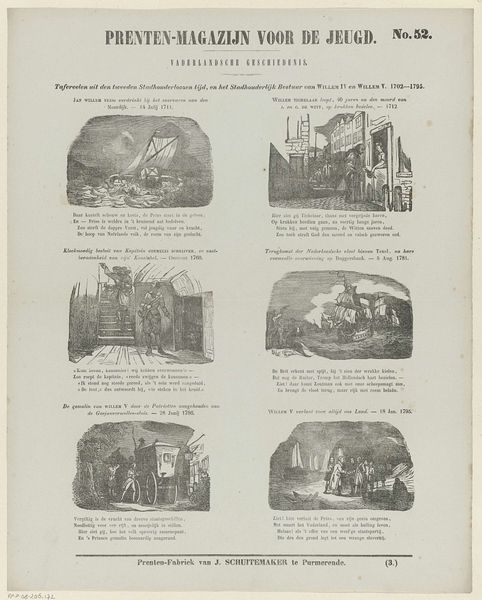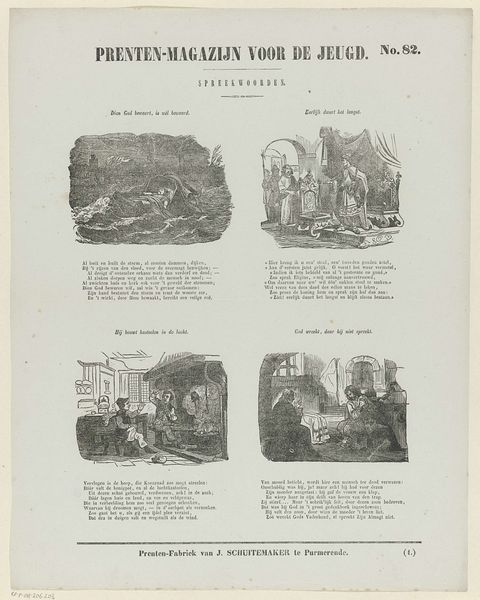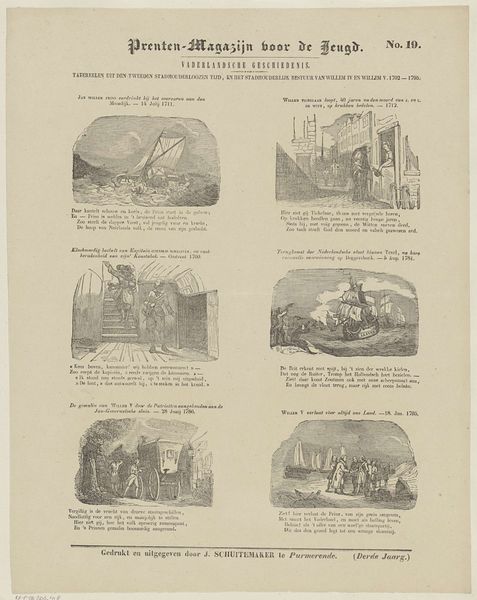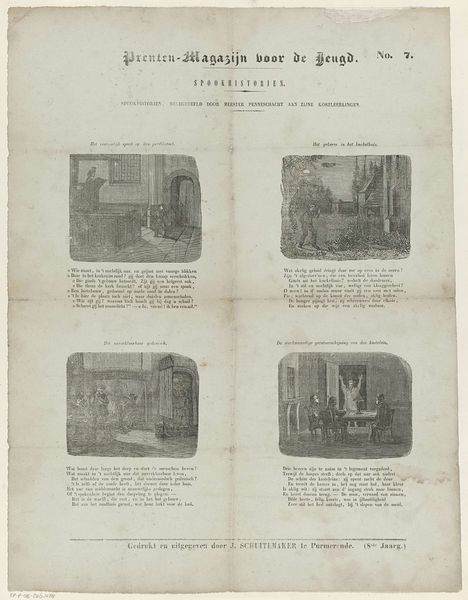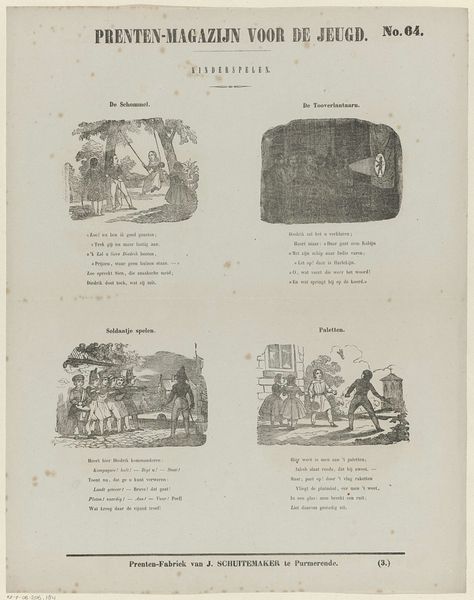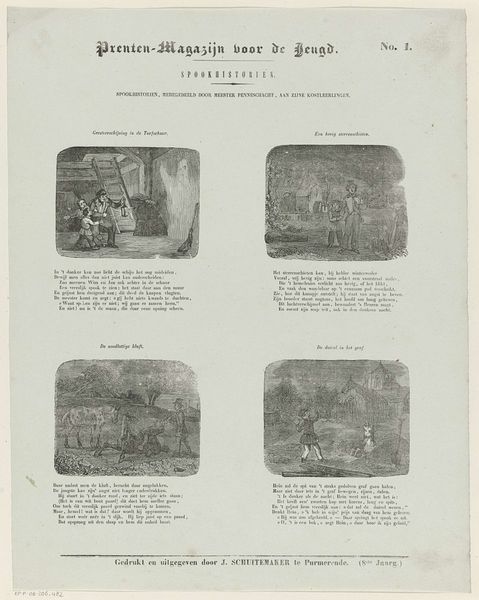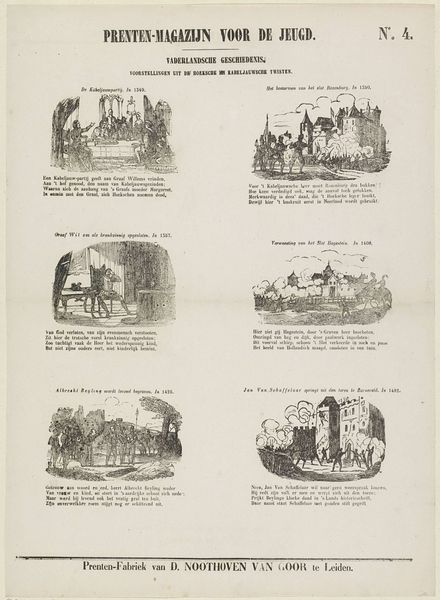
graphic-art, print, engraving
#
graphic-art
#
aged paper
# print
#
old engraving style
#
landscape
#
cityscape
#
history-painting
#
engraving
Dimensions: height 415 mm, width 311 mm
Copyright: Rijks Museum: Open Domain
Curator: This engraving, dating from between 1850 and 1881, is titled "luchtballon, steenkolenmijn, brand en duikerklok," which translates to "hot air balloon, coal mine, fire and diving bell." It's a print by Dirk Noothoven van Goor. What strikes you initially? Editor: The stark contrasts of light and dark immediately grab my attention. It gives the piece a rather dramatic, almost cautionary feel. The composition, broken into four distinct vignettes, also feels quite structured. Curator: The engraving medium itself speaks volumes about the time it was created, doesn’t it? The image, mass-produced through printmaking techniques, would have circulated widely among a burgeoning readership interested in science and technology. The labor involved in its creation reflects industrial processes. Editor: Absolutely. From a formalist perspective, the linework is intricate, almost obsessively detailed, giving each scene a textured quality. The aerial perspective in the balloon image and the subterranean view in the mine scene create interesting spatial dynamics. I'm intrigued by the limited tonal range, creating stark contrast. Curator: These images reflect an era of intense industrial progress. The balloon signifies human aspiration and exploration; the coal mine illustrates resource extraction and labor conditions, likely exploitative; the fire symbolizes hazard; and the diving bell, a sort of underwater industrial device, shows resource extraction. The engraving becomes a material artifact documenting shifts in labor practices and attitudes toward industrialization. Editor: I agree. Visually, the arrangement creates a sense of compartmentalization, with each scene contained within a distinct border. This reinforces a sense of objective observation, but with a dark undercurrent. Curator: Precisely. While seeming educational, it presents an interpretation of modernity inextricably linked to industrial risks, anxieties around labor conditions, and perhaps a glorification of man's reach over nature. How these prints ended up being distributed in magazines for the youth reveals societal values and expectations. Editor: Ultimately, by looking at how Van Goor balances these compositions, we can gain access to an aesthetic viewpoint during that particular time period and better understand the emotional impact of industrial development on Dutch audiences. Curator: And we see the materiality of the artwork interwoven with social anxieties and progress narratives. Thank you for your sharp insight.
Comments
No comments
Be the first to comment and join the conversation on the ultimate creative platform.
